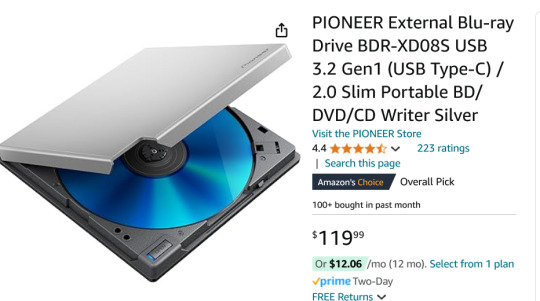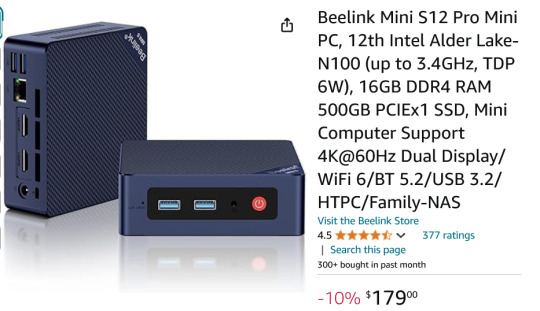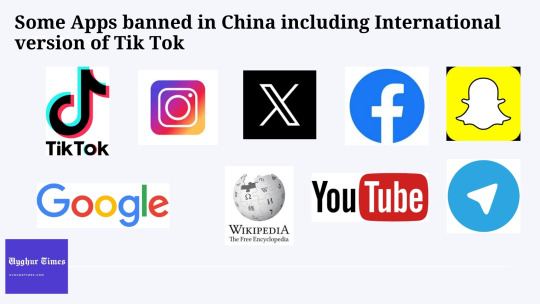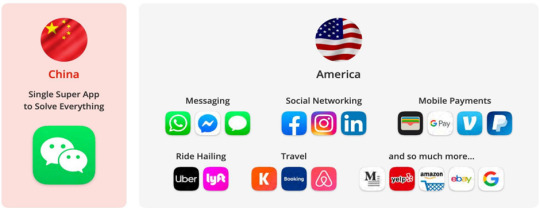#VPN and firewall services
Explore tagged Tumblr posts
Text
High‑Speed and Secure Access Network Solutions – Esconet Technologies
Esconet Technologies offers comprehensive Access Network solutions tailored for enterprise environments. Their network infrastructure suite features high-speed copper and optical fiber connectivity (1 Gbps–100 Gbps), a multilayered design following core/distribution/access best practices, IPv6 readiness, Wi‑Fi 6/6E wireless, cloud-managed systems, advanced security (firewalls, IPS, VPNs), and deployable satellite broadband for remote locations. Partnered with top OEMs (Cisco, Arista, Juniper, Dell, HPE), Esconet ensures scalable, secure, future-ready digital transformation networks. For more details, Visit: Esconet's Access Network solution Page .
#access network solutions#enterprise networking#fiber optic connectivity#high-speed internet infrastructure#Wi-Fi 6 deployment#Wi-Fi 6E network#IPv6 network architecture#cloud-managed networking#enterprise wireless solutions#secure network infrastructure#network security solutions#VPN and firewall services#satellite broadband connectivity#digital transformation infrastructure#Esconet Technologies#copper and fiber network design#scalable network solutions#IT infrastructure services#enterprise IT solutions#smart campus networking
0 notes
Text
Endpoint Security: Safeguarding the Digital Perimeter in an Evolving Landscape

In the dynamic landscape of cybersecurity, where threats are ever-evolving and the attack surface is expanding, ensuring the security of endpoints has become a mission-critical aspect for organizations. Endpoint security, a comprehensive approach to protecting devices connected to a network, has become increasingly vital as the number of remote workers and connected devices continues to rise. This blog post delves into the key components of endpoint security, its importance in the current digital ecosystem, and the evolving strategies to address emerging threats.
Understanding Endpoint Security:
Endpoint security encompasses a suite of measures designed to secure individual devices – or endpoints – that connect to an organization's network. These endpoints can range from traditional desktops and laptops to smartphones, tablets, servers, and other internet-enabled devices. The goal is to create a robust defense that safeguards these endpoints against a multitude of cyber threats.
Key Components of Endpoint Security:
1. Antivirus and Anti-malware Solutions:
Fundamental to endpoint security, antivirus and anti-malware solutions provide real-time protection against malicious software. These tools detect and eliminate viruses, Trojans, and other malware, preventing them from compromising the integrity of endpoints and spreading throughout the network.
2. Firewall Protection:
Firewalls act as a barrier between an endpoint and the external network, monitoring and controlling incoming and outgoing traffic. By blocking unauthorized access and potential threats, firewalls play a crucial role in securing endpoints and preventing malicious activities.
3. Email Security:
Given the prevalence of phishing attacks and email-based threats, endpoint security often includes robust email security features. These capabilities help detect and block phishing attempts, malicious attachments, and other email-borne threats, reducing the risk of compromise through social engineering.
4. Device Control:
Endpoint security solutions often incorporate device control features, allowing organizations to manage and control the use of peripheral devices connected to endpoints. This helps mitigate the risk of data leakage and unauthorized access through USB drives and other external devices.
5. Behavioral Analysis:
Modern endpoint security solutions leverage advanced behavioral analysis to detect anomalies in endpoint behavior. By establishing a baseline of normal activities, these tools can identify deviations that may indicate a security threat, enabling proactive responses to potential risks.
The Importance of Endpoint Security:
1. Data Protection:
Endpoints serve as gateways to an organization's sensitive data. Strengthening endpoint security is crucial for preventing unauthorized access, data breaches, and the compromise of critical information. Robust endpoint security ensures the confidentiality and integrity of data.
2. Threat Mitigation:
Endpoints are frequent targets for a variety of cyber threats, including ransomware, malware, and advanced persistent threats. Endpoint security acts as the first line of defense, detecting and neutralizing these threats before they can infiltrate the network and cause harm.
3. Adaptation to Remote Work:
The rise of remote work has expanded the attack surface, making endpoint security even more critical. With employees accessing corporate networks from various locations and devices, organizations must implement robust endpoint security measures to protect against potential vulnerabilities and cyber threats.
4. Regulatory Compliance:
Endpoint security is vital for maintaining compliance with industry regulations and data protection laws. Failure to secure endpoints adequately can result in legal consequences, financial penalties, and reputational damage for organizations.
The Future of Endpoint Security:
As cyber threats continue to evolve, so must endpoint security strategies. The integration of artificial intelligence and machine learning into endpoint security platforms enhances their ability to detect and respond to emerging threats in real-time. Additionally, the adoption of zero-trust security models assumes that no device or user should be automatically trusted, providing a more proactive and adaptive approach to endpoint security.
In conclusion, as the digital landscape evolves, organizations must recognize the critical role of endpoint security in safeguarding their networks and data. Investing in robust endpoint security solutions not only protects against current threats but also ensures a proactive defense against emerging cyber risks. In this era of constant connectivity, endpoint security stands as the frontline defense, securing the gateways to the digital realm and fortifying organizations against the ever-evolving cybersecurity challenges.
0 notes
Text
@vmprsm replied to your post “Raw MKV rip of Mission Impossible: Fallout:...”:
Theoretically, if one wanted their own copies of the MI movies safely on a hard drive....where would one go?
I mean, there is a site where you can acquire a lot of movies via torrent. I tend to use (rot13) 1337k.gb and I got a heavily discounted Windscribe VPN subscription that I use on almost all of my devices.
But my thing is that... I want commentary reels and special features, and sometimes you'll download a movie but the fucking subtitles are either bad or they become desynced over time and I haaaaate it.
So I've been gathering bits and pieces over the past year to get a Plex system going in my house and it works like a fucking DREAM. But it requires some investment. If you just want to have a few local copies of your favorite movies, this is way overkill. But me, I am canceling all of my family's streaming services and pivoting to our Plex.
So what I have for actually getting the files:

I don't have this model but it's similar to this, a Pioneer External Blu-ray Reader. It sits on a little shelf and is connected to my PC by a USB cable. (I think I got mine for around 68 bucks so you can wait for a sale.)
I use MakeMKV which will rip the big honking raw files from a Blu-ray and leave them as matroshka (.mkv) files.
Because these raw files are ENORMOUS, I compress them in Handbrake. Handbrake is wildly powerful, can convert file formats and make them super small. I have my Handbrake set up special to dump all the non-English language subtitles and audio tracks to save space.
(SUPER BONUS TIP FOR HANDBRAKE: If you have a dedicated GPU, you can give Handbrake permission to use it, and it'll compress shit literally 10x faster, love it.)
At the moment, I am using a Western Digital portable 5TB external harddrive because it was one sale and I couldn't beat the price. Eventually, I want to upgrade to two 10TB HDDs so I can keep a full backup of everything I'm ripping. Because this is a bit of a time and energy commitment and I don't wanna lose all my progress here!
At first I was running Plex off my desktop PC and that worked totally fine, but my family hates having to touch my desktop to wake it up every time, so I very recently grabbed one of these guys:

This is a Beelink Mini PC S12 Pro. It is small enough to fit in my hand but it is a speedy little demon that runs Windows 11. (And eventually I am gonna use it to firewall out ads from our entire home network, I'm pumped for that project but ANYWAY.)
The upside of these mini boys is that instead of being a hefty workhorse like my main computer, this is small and has a low-power draw.
So I moved my Plex Media Server to the mini PC, plugged in my 5TB drive of movies, and now everyone in the house can easily stream anything I have added to the library.

This is what it looks like, if you're curious. Any device in the house that runs Plex and is signed in can select any movie or TV show I have and just watch it like it was Netflix or something.
A month ago, I has like.... 65 movies? Now I'm ripping a few and we're gonna break 100 soon.
"But Arc, where do you get so many blurays!"
My local library.
When I lived in Broward County, FL, I had an extravagantly wonderful library system. Tax dollars at fucking WORK, y'all. Now I live in Georgia and the library system is not nearly as good, but I have still gotten my hands on a frankly ridiculous amount of blurays. Every week I'm picking up 3 to 10 movies or shows, taking them home, making good copies, and returning them.
All of this is an investment and it is work. But as someone who built my computer, built my keyboard, cracked my 3DS and PS Vita-- this is fun to me! This is what I love to do. And through doing it, I've seen more movies in the past year than the last ten years put together.
So yeah, I can't recommend this to everyone, but if you wanna get out of your subscriptions and to just have high quality shit on demand, this is what I'm doing.
Cannot stress this enough tho, if this seems interesting to you: wait for sales. All the components here go on steep sale if you wait patiently. Take your time assembling the parts and keep in mind that shit is modular, you can upgrade parts later.
74 notes
·
View notes
Text
All right, since I bombarded a poor mutual yesterday...
Privacy is not security and security is not privacy. These terms are not interchangeable, but they are intrinsically linked.
While we're at this, anonymity =/= security either. For example, Tor provides the former, but not necessarily the latter, hence using Https is always essential.
It is impossible to have privacy without security, but you can have security without privacy.
A case in point is administrators being able to view any data they want due to their full-access rights to a system. That being said, there are ethics and policies that usually prevent such behavior.
Some general tips:
Operating System: Switch to Linux. Ubuntu and Linux Mint are widely used for a reason. Fedora too. And don't worry! You can keep your current operating system, apps and data. If you're on a Mac computer, you can easily partition your hard drive or SSD by using Disk Utility. If you're on Windows, you can follow this guide.
You want to go a step further? Go with Whonix or Tails. They're Linux distributions as well, but they're both aiming for security, not beauty so the interface might not be ideal for everyone. Many political activists and journalists use them.
You want anonymity? Then you need to familiarize yourself with Tor. Also, Tor and HTTPS and Tor’s weaknesses. When you're using it, don't log in to sites like Google, Facebook, Twitter etc. and make sure to stay away from Java and Javascript, because those things make you traceable.
Alternatives for dealing with censorship? i2p and Freenet.
Is ^ too much? Welp. All right. Let's see. The first step is to degoogle.
Switch to a user-friendly browser like Firefox (or better yet LibreWolf), Brave or Vivaldi. There are plenty of hardened browsers, but they can be overwhelming for a beginner.
Get an ad blocker like Ublock Origin.
Search Engine? StartPage or Duckduckgo. SearXNG too. Like I said degoogle.
Get a PGP encrypted e-mail. Check Protonmail out.
There's also Tutamail that doesn't cover PGP, but uses hybrid encryption that avoids some of the cons of PGP.
Skiff mail is also a decent option.
Use an e-mail aliasing service such as SimpleLogin or AnonAddy.
Check OpenPGP out. Claws Mail is a good e-mail client for Windows and Linux, Thunderbird for Mac OS.
Gpg4win is free and easy to use for anyone that wants to encrypt/decrypt e-mails.
Instead of Whatsapp, Facebook messenger, Telegram etc. use Signal for your encrypted insant messaging, voice and video calls.
Get a metadata cleaner.
Get a firewall like Opensnitch, Portmaster or Netguard which can block Internet for trackers.
Alternatively, go with a private DNS that blocks these trackers. NextDNS is a good paid service. Rethink a good free option.
Replace as many of your applications as you can with FOSS (free and open source) ones. Alternativeto can help you.
Always have automatic updates on. They are annoying af, I know, but they are necessary.
Keep your distance from outdated software.
Always have two-factor authentication (2FA) enabled.
Do not use your administrator account for casual stuff. If you're on Linux, you probably know you can be sudo, but not root.
On Linux distributions use AppArmor, but stay away from random antivirus scanners. Other distributions default to SELinux, which is less suited to a beginner.
Never repeat your passwords. If you can't remember them all, use a password manager like KeePass.
Encrypt your drive.
Honestly, VPNs have their uses and ProtonVPN, Mullvad and Windscribe are decent, but eh. If you don't trust your ISP, why would you trust the VPN provider that claims they don't log you when you can't verify such a thing?
57 notes
·
View notes
Text
Why is Cloudflare blocking me?
Cloudflare is a content delivery network (CDN) and security service that helps protect websites from various threats, such as DDoS attacks, malicious bots, and hackers. If Cloudflare is blocking you, it’s likely because the security settings on the website you’re trying to access have identified your connection as potentially suspicious or harmful. Some common reasons for Cloudflare blocking your access include:
IP reputation: Cloudflare maintains a list of IP addresses known for spam, hacking attempts, or other malicious activities. If your IP address is on this list or has a poor reputation, you may be blocked.
High security settings: The website owner might have set their Cloudflare security settings to a high level, causing more aggressive filtering of incoming traffic. In such cases, even legitimate users might be blocked or challenged.
Rate limiting: Cloudflare can block or limit access from IP addresses that make too many requests within a short period, as this can indicate a DDoS attack or automated scraping attempts.
Browser or user agent issues: Using an outdated browser, a non-standard user agent, or having disabled cookies and JavaScript might trigger Cloudflare’s security measures.
VPN or proxy usage: Using VPNs, proxies, or Tor can sometimes cause Cloudflare to flag your connection as suspicious, as these tools are often used to hide malicious activities.
Firewall rules: The website owner may have set specific firewall rules in Cloudflare that block certain IP addresses, countries, or user agents.
To resolve the issue, you can try the following:
Clear your browser cache and cookies, and ensure JavaScript is enabled.
Update your browser to the latest version or try using a different browser.
Temporarily disable your VPN or proxy, if you are using one.
Check your internet connection and restart your modem or router to obtain a new IP address.
If you suspect your IP address has been mistakenly flagged, you can contact the website owner or Cloudflare support to request a review of your IP address.
Remember that these measures are in place to protect websites and their users from security threats. While blocking can be frustrating, the intent is to maintain a safe online environment for everyone.
Source @ao3org
103 notes
·
View notes
Text
How to Ensure Call Quality and Reliability with a Small Business VoIP Setup
Voice over IP (VoIP) is a cost-effective choice for small businesses. It offers flexibility, scalability, and a range of features. But without the right setup, it can lead to poor audio and dropped calls. Ensuring high call quality requires a few essential steps.

Choose a Reliable VoIP Provider
Not all VoIP providers offer the same level of quality. Choose one with strong uptime guarantees and positive customer reviews. Look for 24/7 support, service-level agreements, and security features like call encryption. A dependable provider is the foundation of a smooth VoIP experience.
Use High-Speed Internet with Enough Bandwidth
VoIP calls depend heavily on your internet connection. Ensure your bandwidth can handle multiple calls at once. If possible, use a wired Ethernet connection instead of Wi-Fi. A dedicated internet line or business-grade connection can significantly improve reliability.
Invest in Quality VoIP Hardware
Using low-quality headsets or outdated phones can degrade your call quality. Invest in noise-canceling headsets, HD VoIP phones, and routers that support VoIP traffic. Reliable hardware reduces jitter, echo, and call delays, creating a better experience for both parties.
Enable Quality of Service (QoS) Settings
Quality of Service (QoS) is a router feature that prioritizes VoIP traffic. It ensures that voice calls are not interrupted by large downloads or video streaming. Configure your router to prioritize SIP traffic. Most business routers support this, and your provider can help set it up.
Monitor Call Quality Metrics Regularly
Keep an eye on call metrics like jitter, packet loss, and latency. Most VoIP services provide dashboards for performance tracking. If you notice frequent issues, they may indicate deeper network problems. Monitoring helps you catch and fix issues before they affect customers.
Secure Your VoIP Network
VoIP systems can be targets for cyberattacks. Use strong passwords, enable firewalls, and update your software regularly. Consider using a virtual private network (VPN) and ensure your provider supports encrypted calling. Security is crucial for maintaining trust and reliability.
Train Your Team
Your staff plays a big role in maintaining call quality. Train them to use headsets correctly, avoid background noise, and report any issues. A well-informed team helps maintain professional and consistent communication.
In Conclusion
A small business VoIP setup can be reliable with the right approach. Choose wisely, invest in quality equipment, and secure your network. With proper setup and maintenance, VoIP becomes a powerful tool for business growth.
3 notes
·
View notes
Text
5 Ways to Improve Your Network Security
In today’s digital age, network security is more critical than ever. With cyberattacks becoming more sophisticated and frequent, businesses and individuals alike must take proactive steps to protect their networks. Whether you’re a small business owner or a tech-savvy professional, improving your network security can help safeguard sensitive data, prevent downtime, and maintain trust. Here are five actionable tips to enhance your network’s defenses.
1. Use Strong, Unique Passwords
Weak or reused passwords are among the most common vulnerabilities in network security. To protect your network:
Create strong passwords that include a mix of uppercase and lowercase letters, numbers, and special characters.
Avoid using easily guessed information, such as birthdays or common words like "password123."
Use a password manager to generate and securely store complex passwords for all your accounts.
Implement multi-factor authentication (MFA) for an extra layer of security. MFA requires users to verify their identity through a second method, such as a text message code or biometric scan.
2. Keep Your Software Up-to-Date
Outdated software is a goldmine for hackers who exploit known vulnerabilities. Regular updates ensure you’re protected with the latest security patches.
Update your operating system, applications, and firmware regularly.
Enable automatic updates to ensure critical patches are installed promptly.
Replace unsupported or obsolete hardware and software with newer, more secure alternatives.
3. Secure Your Wi-Fi Network
Your Wi-Fi network is a primary gateway for potential attacks. Securing it is essential:
Change the default administrator username and password for your router.
Use WPA3 encryption (or at least WPA2) to secure your wireless connection.
Hide your network's SSID (Service Set Identifier) so it’s not visible to unauthorized users.
Set up a guest network for visitors, keeping them isolated from your primary network.
4. Install and Update Security Software
Comprehensive security software is your first line of defense against malicious activity.
Use antivirus and anti-malware programs to detect and remove threats.
Install a firewall to monitor and block unauthorized access to your network.
Invest in a Unified Threat Management (UTM) system, which combines multiple security features like intrusion detection, content filtering, and VPN support.
Keep all security software updated to stay protected from the latest threats.
5. Educate and Train Users
Even the most robust security measures can fail if users are unaware of best practices.
Train your team to recognize phishing emails, suspicious links, and social engineering tactics.
Encourage employees to report unusual activity immediately.
Establish a network security policy that outlines acceptable use, password protocols, and steps for reporting incidents.
Conduct regular cybersecurity awareness sessions to keep users informed about emerging threats.
Bonus Tip: Monitor Your Network Activity
Proactively monitoring your network can help you detect potential issues before they become critical. Use tools to track unusual traffic, failed login attempts, and other red flags.
Conclusion
Improving your network security doesn’t have to be overwhelming. By implementing these five steps, you can significantly reduce your risk of cyberattacks and create a safer environment for your business or personal network. Remember, cybersecurity is an ongoing process—stay vigilant, keep learning, and adapt to new threats as they arise.
Have questions or need help securing your network? Contact us today for expert IT solutions tailored to your needs!
4 notes
·
View notes
Text

#cyberpunk#detailed#futuristic#moody#gritty#urban#decay#reflective#high-tech#dystopia#atmospheric#digital art#cyberpunk 2077
10 notes
·
View notes
Text
Top Cybersecurity Solutions Providers in Delhi-NCR: Wish Geeks Techserve
Cybersecurity services in India have become an essential investment for businesses looking to safeguard their digital infrastructure from rising cyber threats. With an increasing number of data breaches, phishing attacks, and malware infiltrations, organizations cannot afford to overlook the importance of strong IT security frameworks. Companies in Delhi-NCR, in particular, need to prioritize security due to the region's rapid technological growth and evolving cyber risk landscape.
Finding the top cybersecurity solutions provider in India is crucial for ensuring business continuity, regulatory compliance, and data integrity. Among the top contenders offering robust security solutions is Wish Geeks Techserve, a trusted IT security services India provider known for its innovative and customized cybersecurity strategies.
The Growing Cybersecurity Challenges in India
As the digital economy expands, businesses face a multitude of security threats ranging from ransomware attacks to sophisticated hacking attempts. The emergence of remote working models and cloud computing has further increased the vulnerability of organizations, making network security services in India a necessity rather than an option. The cyber threat landscape includes:
Phishing and Social Engineering Attacks: Cybercriminals exploit human vulnerabilities through fraudulent emails and deceptive practices to gain unauthorized access to sensitive information.
Malware and Ransomware Infections: Malicious software infiltrates systems, encrypting or corrupting critical business data, often leading to significant financial losses.
Insider Threats and Human Errors: Employees, either maliciously or unintentionally, can cause security breaches through weak passwords, mishandling of data, or lack of security awareness.
DDoS (Distributed Denial-of-Service) Attacks: Hackers overwhelm business networks with excessive traffic, leading to downtime and operational disruptions.
Cloud Security Risks: With increasing cloud adoption, businesses must ensure secure cloud storage, access management and data encryption practices to prevent unauthorized intrusions.
Why Choose Wish Geeks Techserve as the Best Cybersecurity Company in India?
Wish Geeks Techserve stands out among cybersecurity solutions providers in India, offering state-of-the-art security services tailored to businesses of all sizes. Their comprehensive approach ensures complete protection from internal and external threats. Here’s what makes them the ideal IT security services India provider:
1. Advanced Cybersecurity Solutions for End-to-End Protection
Wish Geeks Techserve provides holistic security solutions that cover all aspects of IT security. Their expertise spans across:
Threat Intelligence & Risk Assessment: Proactively identify vulnerabilities and strengthen weak points before attacks occur.
Endpoint Protection & Malware Defense: Implementing security measures that shield endpoints like computers, mobile devices and IoT systems from cyber threats.
Firewall & Intrusion Prevention Systems (IPS): Ensuring that network boundaries remain impervious to unauthorized access attempts.
Incident Response & Forensics: Swift action in the event of a cyberattack, minimizing damage and preventing future breaches.
2. Comprehensive Network Security Services in India
As a leading cybersecurity solutions provider in India, Wish Geeks Techserve specializes in network security services in India, ensuring robust defense mechanisms against cyber threats. Their network security offerings include:
Secure VPN Implementations: Allowing safe and encrypted remote access for employees working from different locations.
DDoS Protection & Mitigation: Preventing large-scale cyberattacks that aim to disrupt operations.
Zero Trust Security Frameworks: Adopting a ‘never trust, always verify’ approach to user authentication and access control.
3. 24/7 Cybersecurity Monitoring & Incident Response
Cyber threats do not operate within business hours, which is why Wish Geeks Techserve provides round-the-clock monitoring and support. Their dedicated Security Operations Center (SOC) continuously tracks anomalies, preventing attacks before they escalate.
4. Regulatory Compliance & Data Privacy Solutions
With stringent data protection regulations like GDPR and India’s upcoming Personal Data Protection Bill, businesses must comply with legal security mandates. Wish Geeks Techserve helps companies meet these requirements by implementing industry-leading compliance strategies and ensuring secure handling of customer and business data.
5. Customized Cybersecurity Strategies for Businesses
Recognizing that no two businesses have the same security needs, Wish Geeks Techserve delivers customized cybersecurity services in India based on industry-specific challenges. Whether it's securing financial transactions, protecting healthcare records, or preventing e-commerce fraud, their team crafts personalized solutions to fit organizational requirements.
How Businesses Can Benefit from Strong Cybersecurity Measures
Adopting best-in-class IT security services India offers multiple benefits beyond just data protection. Businesses that invest in top-tier security measures experience:
Improved Customer Trust: Demonstrating commitment to data privacy enhances brand credibility.
Reduced Financial Losses: Preventing cyberattacks reduces the risk of hefty ransom payments, fines and revenue losses due to downtime.
Operational Efficiency: Secure IT environments enable seamless business operations without disruptions from malware or unauthorized access.
Competitive Advantage: Businesses that prioritize cybersecurity gain an edge over competitors who fail to implement robust security strategies.
Conclusion
Cybersecurity is no longer a choice but a necessity for businesses in Delhi-NCR and across India. Choosing the right cybersecurity solutions provider in India can make all the difference in ensuring business continuity and protection against cyber threats. Wish Geeks Techserve emerges as one of the best cybersecurity companies in India, offering cutting-edge IT security services in India that cater to businesses of all sizes. Their expertise in network security services in India ensures that organizations remain resilient against evolving cyber risks.
If you’re looking for a trusted partner to fortify your cybersecurity infrastructure, Wish Geeks Techserve is the go-to provider, ensuring that your business stays secure in the ever-changing digital landscape. Invest in strong security measures today and safeguard your business’s future!
#Best Cybersecurity Company in India#IT Security Services India#Cybersecurity Solutions Provider in India#Network Security Services in India
4 notes
·
View notes
Text
How-To IT
Topic: Core areas of IT
1. Hardware
• Computers (Desktops, Laptops, Workstations)
• Servers and Data Centers
• Networking Devices (Routers, Switches, Modems)
• Storage Devices (HDDs, SSDs, NAS)
• Peripheral Devices (Printers, Scanners, Monitors)
2. Software
• Operating Systems (Windows, Linux, macOS)
• Application Software (Office Suites, ERP, CRM)
• Development Software (IDEs, Code Libraries, APIs)
• Middleware (Integration Tools)
• Security Software (Antivirus, Firewalls, SIEM)
3. Networking and Telecommunications
• LAN/WAN Infrastructure
• Wireless Networking (Wi-Fi, 5G)
• VPNs (Virtual Private Networks)
• Communication Systems (VoIP, Email Servers)
• Internet Services
4. Data Management
• Databases (SQL, NoSQL)
• Data Warehousing
• Big Data Technologies (Hadoop, Spark)
• Backup and Recovery Systems
• Data Integration Tools
5. Cybersecurity
• Network Security
• Endpoint Protection
• Identity and Access Management (IAM)
• Threat Detection and Incident Response
• Encryption and Data Privacy
6. Software Development
• Front-End Development (UI/UX Design)
• Back-End Development
• DevOps and CI/CD Pipelines
• Mobile App Development
• Cloud-Native Development
7. Cloud Computing
• Infrastructure as a Service (IaaS)
• Platform as a Service (PaaS)
• Software as a Service (SaaS)
• Serverless Computing
• Cloud Storage and Management
8. IT Support and Services
• Help Desk Support
• IT Service Management (ITSM)
• System Administration
• Hardware and Software Troubleshooting
• End-User Training
9. Artificial Intelligence and Machine Learning
• AI Algorithms and Frameworks
• Natural Language Processing (NLP)
• Computer Vision
• Robotics
• Predictive Analytics
10. Business Intelligence and Analytics
• Reporting Tools (Tableau, Power BI)
• Data Visualization
• Business Analytics Platforms
• Predictive Modeling
11. Internet of Things (IoT)
• IoT Devices and Sensors
• IoT Platforms
• Edge Computing
• Smart Systems (Homes, Cities, Vehicles)
12. Enterprise Systems
• Enterprise Resource Planning (ERP)
• Customer Relationship Management (CRM)
• Human Resource Management Systems (HRMS)
• Supply Chain Management Systems
13. IT Governance and Compliance
• ITIL (Information Technology Infrastructure Library)
• COBIT (Control Objectives for Information Technologies)
• ISO/IEC Standards
• Regulatory Compliance (GDPR, HIPAA, SOX)
14. Emerging Technologies
• Blockchain
• Quantum Computing
• Augmented Reality (AR) and Virtual Reality (VR)
• 3D Printing
• Digital Twins
15. IT Project Management
• Agile, Scrum, and Kanban
• Waterfall Methodology
• Resource Allocation
• Risk Management
16. IT Infrastructure
• Data Centers
• Virtualization (VMware, Hyper-V)
• Disaster Recovery Planning
• Load Balancing
17. IT Education and Certifications
• Vendor Certifications (Microsoft, Cisco, AWS)
• Training and Development Programs
• Online Learning Platforms
18. IT Operations and Monitoring
• Performance Monitoring (APM, Network Monitoring)
• IT Asset Management
• Event and Incident Management
19. Software Testing
• Manual Testing: Human testers evaluate software by executing test cases without using automation tools.
• Automated Testing: Use of testing tools (e.g., Selenium, JUnit) to run automated scripts and check software behavior.
• Functional Testing: Validating that the software performs its intended functions.
• Non-Functional Testing: Assessing non-functional aspects such as performance, usability, and security.
• Unit Testing: Testing individual components or units of code for correctness.
• Integration Testing: Ensuring that different modules or systems work together as expected.
• System Testing: Verifying the complete software system’s behavior against requirements.
• Acceptance Testing: Conducting tests to confirm that the software meets business requirements (including UAT - User Acceptance Testing).
• Regression Testing: Ensuring that new changes or features do not negatively affect existing functionalities.
• Performance Testing: Testing software performance under various conditions (load, stress, scalability).
• Security Testing: Identifying vulnerabilities and assessing the software’s ability to protect data.
• Compatibility Testing: Ensuring the software works on different operating systems, browsers, or devices.
• Continuous Testing: Integrating testing into the development lifecycle to provide quick feedback and minimize bugs.
• Test Automation Frameworks: Tools and structures used to automate testing processes (e.g., TestNG, Appium).
19. VoIP (Voice over IP)
VoIP Protocols & Standards
• SIP (Session Initiation Protocol)
• H.323
• RTP (Real-Time Transport Protocol)
• MGCP (Media Gateway Control Protocol)
VoIP Hardware
• IP Phones (Desk Phones, Mobile Clients)
• VoIP Gateways
• Analog Telephone Adapters (ATAs)
• VoIP Servers
• Network Switches/ Routers for VoIP
VoIP Software
• Softphones (e.g., Zoiper, X-Lite)
• PBX (Private Branch Exchange) Systems
• VoIP Management Software
• Call Center Solutions (e.g., Asterisk, 3CX)
VoIP Network Infrastructure
• Quality of Service (QoS) Configuration
• VPNs (Virtual Private Networks) for VoIP
• VoIP Traffic Shaping & Bandwidth Management
• Firewall and Security Configurations for VoIP
• Network Monitoring & Optimization Tools
VoIP Security
• Encryption (SRTP, TLS)
• Authentication and Authorization
• Firewall & Intrusion Detection Systems
• VoIP Fraud DetectionVoIP Providers
• Hosted VoIP Services (e.g., RingCentral, Vonage)
• SIP Trunking Providers
• PBX Hosting & Managed Services
VoIP Quality and Testing
• Call Quality Monitoring
• Latency, Jitter, and Packet Loss Testing
• VoIP Performance Metrics and Reporting Tools
• User Acceptance Testing (UAT) for VoIP Systems
Integration with Other Systems
• CRM Integration (e.g., Salesforce with VoIP)
• Unified Communications (UC) Solutions
• Contact Center Integration
• Email, Chat, and Video Communication Integration
2 notes
·
View notes
Text
Week 11: The Impact of Social Media Bans on China Users and Global Connection
Social media has revolutionized global communication, enabling instant interactions and cultural exchanges across borders. However, in China, where platforms like Facebook, Twitter, and Instagram are banned, the digital landscape operates in a unique, isolated ecosystem. These bans have not only reshaped how Chinese users interact online but also influenced global connections in profound ways. This blog post delves into the implications of social media restrictions in China and their effects on both domestic users and international relationships.

The Landscape of Social Media in China
China's social media environment is dominated by domestic platforms such as WeChat, Weibo, Douyin (the Chinese version of TikTok), and Xiaohongshu. These platforms offer functionalities like their global counterparts but operate under strict government regulations and censorship. The bans on Western platforms like Facebook and YouTube were implemented as part of the "Great Firewall," a mechanism designed to control information flow and safeguard national security.
While these restrictions may serve government objectives, they create a digital divide, limiting access to global platforms for Chinese users and vice versa.

Impact on Chinese Users
Limited Access to Global Perspectives
Chinese users are largely confined to consuming content curated within their domestic ecosystem. This isolation restricts exposure to diverse viewpoints, global news, and cultural exchanges. For instance, while a Twitter user in New York might engage with trending hashtags about global climate initiatives, a Weibo user in Beijing would rely on state-approved narratives.
Reliance on Alternative Tools
Some Chinese users’ resort to Virtual Private Networks (VPNs) to bypass restrictions, accessing platforms like Instagram to follow international influencers or engage with global communities. However, using VPNs is increasingly risky as the government intensifies crackdowns on their usage.
Creative Innovation Within Boundaries
On the flip side, the bans have spurred innovation in the Chinese tech industry. Platforms like WeChat integrate social media, e-commerce, and financial services into a single app, setting a global standard for multifunctional platforms.

Impact on Global Connections
Cultural Exchange Barriers.
Social media has become a vital tool for cultural diplomacy and international relations. The inability of many Chinese citizens to freely access global platforms hinders their participation in global conversations. For example, during major global events like the Olympics, discussions on platforms like Twitter rarely include direct perspectives from Chinese users.
Challenges for Foreign Businesses
Companies looking to enter the Chinese market must adapt to its domestic platforms and adhere to strict regulations. For instance, brands like Nike and Apple rely heavily on WeChat and Douyin for marketing campaigns, which can limit their reach and creativity compared to global platforms.
Geopolitical Tensions
Social media bans also reflect broader geopolitical divides. The U.S. and other Western nations have criticized China's digital censorship as a barrier to free speech. Conversely, China views its controls as necessary to maintain national sovereignty in the digital age. This dichotomy often exacerbates misunderstandings and mistrust between nations.

Conclusion
The bans on global social media platforms in China have far-reaching implications, shaping not only the digital experiences of Chinese users but also the nature of global connections. While these restrictions create challenges, they also present opportunities for innovation and collaboration. Understanding these dynamics is crucial as we navigate an increasingly interconnected yet fragmented digital world.
By exploring creative solutions and fostering dialogue, it’s possible to bridge the digital divide and create a more inclusive online environment for all.

References
Chan, C., Dao, A., Hou, J., Jin, T., & Tuong, C. (2011). China’s Great Firewall. Cs.stanford.edu; Stanford University. https://cs.stanford.edu/people/eroberts/cs181/projects/2010-11/FreeExpressionVsSocialCohesion/china_policy.html
Liang, F., Das, V., Kostyuk, N., & Hussain, M. M. (2018). Constructing a Data-Driven Society: China’s Social Credit System as a State Surveillance Infrastructure. Policy & Internet, 10(4), 415–453. https://doi.org/10.1002/poi3.183
Wang, Y. (2020, September 1). In China, the “Great Firewall” Is Changing a Generation. POLITICO. https://www.politico.com/news/magazine/2020/09/01/china-great-firewall-generation-405385
3 notes
·
View notes
Text
‘The Impact of Social Media Bans on Chinese Users and Global Connections’
MDA20009 Digital Communities
Hello everyone, this is our last post T^T! To my course mates, the semester has come to an end, hope you all had a great holiday! Also, an early 🎄Merry Christmas❄️ to everyone!!!
The quick spread of social media around the world has brought people and communities together. However, some countries maintain restrictive media environments that make it difficult for people to use these platforms freely, with China being a good example. The Chinese government has implemented strict censorship measures to control news, social media and online communication. The ‘Great Firewall’ prevents users from accessing popular platforms such as Facebook, Instagram and Google services. Despite these restrictions, millions of Chinese users have found ways around these barriers, raising significant questions about how censorship affects lives, national identity and global connectivity. This raises important questions about how these restrictions shape individual lives, national identities, and broader networks of global interaction.

Understanding the Great Firewall
According to Britannica, the Great Firewall (also known as the Golden Shield Project) is a key component of China's Golden Shield Project, combines regulatory and technological measures to censor and monitor internet usage (Gisonna, 2024). It employs tools like keyword filtering, bandwidth throttling, and Deep Packet Inspection to block specific content. This system not only restricts foreign platforms but also pressures journalists through dismissals and arrests, fostering self-censorship. As journalist Evan Osnos observed, China's digital links to the world are increasingly deteriorating, emphasizing its isolationist internet policy.
U.S. technology in China

China's restrictive policies make it challenging for U.S. tech companies to compete, with platforms like Facebook, Twitter, and Google blocked. To illustrate, in early 2013, Google withdrew its services after several conflicts with Chinese censorship, and in late 2014, China disabled Google's email service Gmail, which raised concerns at the U.S. State Department (Xu, 2017). Furthermore, in early 2014, Google chairman Eric Schmidt indicated that encryption could facilitate entry into the Chinese market for Google. However, these plans encountered a challenge in March 2014 when the government took action against the social networking app WeChat. The government's decision to crack down on the social networking app WeChat to the deletion of the accounts of several prominent political liberals. Subsequently, new regulations were announced for 'instant messaging tools' on mobile chat apps, such as WeChat, which has over 750 million users and is increasingly seen as a platform for mass dissent that can bypass censors (Xu, 2017). Gmail’s ban and the crackdown on politically liberal accounts on WeChat demonstrated the government’s tightening control.

Social Media Censorship: How does it work?
The Great Firewall of China employs sophisticated methods to enforce internet censorship and block unwanted content (Xu, 2017):
Network Blackholing: A fundamental technique involves maintaining a list of banned IP addresses. If a user attempts to access a prohibited site, the connection is immediately dropped, effectively severing access to restricted content。
Quality of Service (QoS) Filtering: This advanced approach employs deep packet inspection to analyze data traffic and identify connections attempting to bypass censorship through Virtual Private Networks (VPNs). QoS filtering intercepts these connections before they reach their destination, undermining one of the primary tools users rely on to circumvent the firewall.
Domain Name System (DNS) Hijacking: DNS hijacking disrupts the mapping of IP addresses to website names, preventing users from accessing flagged domains. Social media platforms such as Facebook and Twitter are systematically targeted, ensuring that only approved alternatives like Weibo and WeChat dominate the market.
URL Filtering: URL filtering involves the use of proxies to examine requested web addresses for banned keywords. This precise control allows authorities to selectively block pages on platforms like Wikipedia, allowing access to general content while censoring politically sensitive topics.
To learn more about how social media censorship works, here are the views shared by Karoline Kan, a Beijing-based journalist and writer:
The Impact of China's Social Media Censorship
Positive Impacts: Government and Domestic Industry Benefits
From a government perspective, the Great Firewall serves multiple purposes. It blocks access to foreign platforms such as Google, Twitter and Facebook, which were blocked as a result of uprisings such as the 2009 Xinjiang riots. The government is trying to maintain political unity and national security, by limiting access to other forms of governance and lifestyles, Firewalls have also helped Chinese internet companies like Tencent, Baidu, Alibaba and Weibo to grow and succeed without competition from international rivals. This approach to cyber-sovereignty is often seen as a way of protecting national stability (Kannan, A. 2017).
Negative Impacts: Limitations on Innovation and Freedom
From the Chinese citizens perspective, these restrictions pose significant challenges to entrepreneurs, influencers and professionals in accessing global markets and networks, thereby stifling business opportunities and cultural exchanges. Strict government control of online content hinders dissent and creative freedom because users know that surveillance is everywhere. As a result, many people use VPNs to get access to blocked content, but these methods are not foolproof and can be blocked. Some have opted for more advanced tools such as Tor or SSH tunnelling, but these are not for everyone (Xu, 2017).
Despite these challenges, Chinese internet users have found alternative ways to get around the firewall. For instance, tools like Ultrasurf, Psiphon, and Freegate let users set up proxy servers, and microblogging platforms like Weibo have become places for people to talk about things they would normally be banned from discussing. On top of that, over the years, internet users have created a whole range of visual puns, memes, acronyms and slang to get around the censorship, which has transformed online spaces into complex arenas for political and social debate (Xu, 2017).
Global Implications
Censorship not only affects China, but also reshapes global digital dynamics. The fragmentation of the Internet, where users from different countries are often separated into different cyberspaces, limits cross-cultural dialogue and global collaboration. For international brands and content creators, the Chinese market holds great opportunities, but navigating these constraints is often too complex, leading to missed opportunities. On a larger scale, China's digital isolation has exacerbated geopolitical tensions, leading to a growing digital divide between China and the West (Kannan, A. 2017). These tensions complicate international diplomacy and exacerbate the fragmentation of the global digital ecosystem.
Conclusion
In a nutshell, China's 'Great Firewall' is a sophisticated and multifaceted approach to internet censorship that has a significant impact on the online environment for Chinese citizens. While the firewall helps the government keep political stability and protect domestic industries, it also stifles creativity, limits global connectivity, and hinders free expression. Chinese users are creative in finding ways around the restrictions, but these policies contribute to the fragmentation of the global digital landscape and exacerbate geopolitical tensions. Ultimately, censorship policies greatly affect China's digital ecosystem and its interaction with the global community.


Reference:
Gisonna, N. (2024). Great Firewall | History, China, Hong Kong, & Facts. Encyclopedia Britannica. https://www.britannica.com/topic/Great-Firewall
Kannan, A. (2017). Here’s why the Great Firewall of China has benefited the country. Young Post. https://www.scmp.com/yp/discover/your-voice/opinion/article/3066603/heres-why-great-firewall-china-has-benefited-country
Silva, M. (2019).China social media censorship: how does it work? BBC. https://www.bbc.com/news/av/stories-49527899
Xu, B. (2017). Media censorship in China. Council on Foreign Relations. https://www.cfr.org/backgrounder/media-censorship-china
5 notes
·
View notes
Text
Best Practices for Data Lifecycle Management to Enhance Security
Securing all communication and data transfer channels in your business requires thorough planning, skilled cybersecurity professionals, and long-term risk mitigation strategies. Implementing global data safety standards is crucial for protecting clients’ sensitive information. This post outlines the best practices for data lifecycle management to enhance security and ensure smooth operations.
Understanding Data Lifecycle Management
Data Lifecycle Management (DLM) involves the complete process from data source identification to deletion, including streaming, storage, cleansing, sorting, transforming, loading, analytics, visualization, and security. Regular backups, cloud platforms, and process automation are vital to prevent data loss and database inconsistencies.
While some small and medium-sized businesses may host their data on-site, this approach can expose their business intelligence (BI) assets to physical damages, fire hazards, or theft. Therefore, companies looking for scalability and virtualized computing often turn to data governance consulting services to avoid these risks.
Defining Data Governance
Data governance within DLM involves technologies related to employee identification, user rights management, cybersecurity measures, and robust accountability standards. Effective data governance can combat corporate espionage attempts and streamline database modifications and intel sharing.
Examples of data governance include encryption and biometric authorization interfaces. End-to-end encryption makes unauthorized eavesdropping more difficult, while biometric scans such as retina or thumb impressions enhance security. Firewalls also play a critical role in distinguishing legitimate traffic from malicious visitors.
Best Practices in Data Lifecycle Management Security
Two-Factor Authentication (2FA) Cybercriminals frequently target user entry points, database updates, and data transmission channels. Relying solely on passwords leaves your organization vulnerable. Multiple authorization mechanisms, such as 2FA, significantly reduce these risks. 2FA often requires a one-time password (OTP) for any significant changes, adding an extra layer of security. Various 2FA options can confuse unauthorized individuals, enhancing your organization’s resilience against security threats.
Version Control, Changelog, and File History Version control and changelogs are crucial practices adopted by experienced data lifecycle managers. Changelogs list all significant edits and removals in project documentation, while version control groups these changes, marking milestones in a continuous improvement strategy. These tools help detect conflicts and resolve issues quickly, ensuring data integrity. File history, a faster alternative to full-disk cloning, duplicates files and metadata in separate regions to mitigate localized data corruption risks.
Encryption, Virtual Private Networks (VPNs), and Antimalware VPNs protect employees, IT resources, and business communications from online trackers. They enable secure access to core databases and applications, maintaining privacy even on public WiFi networks. Encrypting communication channels and following safety guidelines such as periodic malware scans are essential for cybersecurity. Encouraging stakeholders to use these measures ensures robust protection.
Security Challenges in Data Lifecycle Management
Employee Education Educating employees about the latest cybersecurity implementations is essential for effective DLM. Regular training programs ensure that new hires and experienced executives understand and adopt best practices.
Voluntary Compliance Balancing convenience and security is a common challenge. While employees may complete security training, consistent daily adoption of guidelines is uncertain. Poorly implemented governance systems can frustrate employees, leading to resistance.
Productivity Loss Comprehensive antimalware scans, software upgrades, hardware repairs, and backups can impact productivity. Although cybersecurity is essential, it requires significant computing and human resources. Delays in critical operations may occur if security measures encounter problems.
Talent and Technology Costs Recruiting and developing an in-house cybersecurity team is challenging and expensive. Cutting-edge data protection technologies also come at a high cost. Businesses must optimize costs, possibly through outsourcing DLM tasks or reducing the scope of business intelligence. Efficient compression algorithms and hybrid cloud solutions can help manage storage costs.
Conclusion
The Ponemon Institute found that 67% of organizations are concerned about insider threats. Similar concerns are prevalent worldwide. IBM estimates that the average cost of data breaches will reach 4.2 million USD in 2023. The risks of data loss, unauthorized access, and insecure PII processing are rising. Stakeholders demand compliance with data protection norms and will penalize failures in governance.
Implementing best practices in data lifecycle management, such as end-to-end encryption, version control systems, 2FA, VPNs, antimalware tools, and employee education, can significantly enhance security. Data protection officers and DLM managers can learn from expert guidance, cybersecurity journals, and industry peers’ insights to navigate complex challenges. Adhering to privacy and governance directives offers legal, financial, social, and strategic advantages, boosting long-term resilience against the evolving threats of the information age. Utilizing data governance consulting services can further ensure your company is protected against these threats.
3 notes
·
View notes
Text
Module 1 - Journal Entry

I did not know how to start my blog so I opted for a poem that summarizes my learnings for the first lesson of the first module. The first and second lines depict how the world is free to view our personal data and there are cybercriminals that find ways to steal them so that they can sell it to the dark web. I am aware of the current situation of our cyberspace and how privacy and security are crucial concepts to tackle for my major and course. The lesson introduced me to the difference between privacy and security. As seen in lines three and four, security is similar to putting up walls and defenses to keep data safe and away from the view of outside forces. The haze symbolizes a method of hiding data from attackers to ensure that they will not be able to spot and locate the target location. Similar to a castle deep within a mysterious fog. The fog is meant to confuse enemies and ensure they get lost in their way. The laws and upbring of rights related to privacy was also tackled in the lesson. We were given the right to be left alone and therefore making privacy a right for all. However, do we have no other choice but to accept it? Accept the fact that privacy is an abstract construct that is impossible to fully enforce, especially in our modern digital world. As seen in the fifth and sixth line, we were given the choices to decide how our data is handled, processed, and stored. Yet do we have to accept that despite all the laws and rights given to us, we may not be a hundred percent safe and private? Privacy and security in our current cyberspace has always been a doubt in my mind. As seen in the seventh and final line, I view the internet and cyberspace to be a dreamy and vast haven due to its contents and surreal size. I see it as a multiverse filled with content, malwares, and data. A bubble of information about to collapse on itself due to its size and complexity. Yet a question always pop inside my mind. Am I truly hidden and safe? Even if I use firewalls, VPNs, and other security measures, will I be able to keep my data private? Perhaps privacy is nothing but an illusion of control and choice over our data, or a ploy to trick humanity with autonomy.
The price we pay for convenience
Last meeting, the class discussed about the module 1 lesson 1 and the questions of Sir ████ piqued my interest and curiosity.
Are you for sale?
My answer during our discussion was no. No one would be willing to sell themselves to others. But would they? Would someone be foolish enough to sell their data in exchange for things that might make their life easier and better? After the class, I realized that I have been sharing my information for convenience. The internet makes my life easier. Delivering food, enrolling into a new semester, chatting with someone, these are few of the thing that the internet provide to make our lives easier. However, these services require a fuel, our data. I am aware that Facebook and other apps use our data as part of their business model. Product placement and advertisements is the leading revenue of such apps because I believe they say to business owners the quote below.
"Hey, we have a platform and a lot of data subjects use it. If you pay us, we can showcase your products so that a lot of users can see."
Like a digital billboard, shop, and service all in one with extra steps, I have observed these applications having algorithms to show me things I may want and increase my urge to buy them. There are even questionable moments I have experienced last semester. One morning, I was talking with Mr. ████ and his new car. I love the car and its cool features such as the door handles that hides inside the doors for security and the back view of the car. After a few hours, I opened my Facebook and YouTube to surf for posts and videos. I noticed more posts about cars and I even the same car that Mr. ████ bought. I was shocked! I thought to myself, was my phone listening to my conversation with Mr. ████ ?!
Principles of Data Privacy
To end this entry, I would like to recall about the three Data Privacy principles.
Transparency
Data subjects must be informed by the data collectors and processors about how their data will be collected, stored, processed, and destroyed. By being transparent, data subjects will be informed and aware of what their data is being used for and if it is safely kept. I would be doubtful to provide data to a survey if they did not took into consideration about how they will store my data, how they will process it, and if they will destroy it if they will not need it anymore. I remember the example of Sir ████ about sharing the information of QR codes and examination papers. Last pandemic, each cities in our country provided their own local QR code system instead of having one app for the entire country. It was revealed that they plan to use the collected data for elections which is reasonable but a violation of the data privacy act and the second principle of data privacy. I also remember that some of my examination papers were not returned and turns out some schools sell them. However, I also remember that I throw away my old test papers because I was oblivious of how it should be properly handled and disposed of when I don't need it anymore. The most notable thing related to transparency is the data privacy agreement that pops up on websites or games. I remember agreeing to them without fully reading them. Even though the app or organization is transparent, it is still up to the users to read the agreement to be informed about how their data will be kept, processed, and destroyed.
Legitimate Purpose
Data subjects must know the purpose of why their data is being collected and what for. I remember that QR codes are used for close contact tracing related to COVID19 but I was not informed that they might use it for other purpose. Which is why I mentioned that this example violated the second principle about giving the data subjects a legitimate purpose of their data. I felt like they took advantage of the provided data and they took the opportunity to gather information. But what is a legitimate purpose? How do we gauge it? I would also want to explore more and look into illegitimate purposes of collecting data. I believe the answers to my questions based on what I know is that we know its a legitimate purpose if it is beneficial, for school, for research, and for national security. I remember that the CCTV surveillance of the hallways of the CIC building is a legitimate purpose to collect video 24/7 to ensure the security and to have a record of what is happening around the premises to help in future investigations. I believe an illegitimate purpose would be to set up cameras on bathrooms. I have not experienced it but I have seen it on K-drama and anime. Perverts use hidden cameras to acquire videos of mostly girls without permission as a way to blackmail them or to satisfy their pleasures. I also remember a Filipino series about an IT guy in a beach resort and he was spying on his boss which he has a crush on. He placed cameras on the bathroom, bedroom, and more, so that he can satisfy his lust for her.
Proportionality
There should not be an excessive collection of data. I remember the video of Sir ████ about the ROTC or CWTS form which asked a lot of information from students even though there is a class list already present. There is also limited storage capabilities and the data our world is storing and acquiring are increasing rapidly. Having too much data is also difficult to dispose of when it is no longer needed. Therefore, making things harder to organize and handle.
To encapsulate all of my learnings about the Module 1, I have decided to end this journal entry with a poem.

3 notes
·
View notes
Text
does hughes net offer a vpn for router
does hughes net offer a vpn for router
HughesNet VPN Router Compatibility
Title: Ensuring HughesNet VPN Router Compatibility: What You Need to Know
In today's digitally interconnected world, safeguarding your online activities is paramount. Virtual Private Networks (VPNs) serve as a vital tool in protecting your internet privacy and security. However, for individuals utilizing HughesNet satellite internet services, ensuring VPN router compatibility is essential for seamless integration and optimal performance.
HughesNet, known for its reliable satellite internet connectivity, offers users high-speed internet access in areas where traditional cable or DSL services may be unavailable. While HughesNet's satellite internet service operates differently from terrestrial broadband connections, it is still compatible with VPN routers.
When selecting a VPN router to use with HughesNet, it's crucial to consider certain factors to ensure compatibility and performance. Firstly, opt for a VPN router that supports satellite internet technology and is compatible with HughesNet's network infrastructure. This compatibility ensures smooth data transmission and minimal latency, maintaining your internet speed and reliability.
Additionally, prioritize VPN routers with robust security features and encryption protocols to fortify your online privacy and protect sensitive information from potential cyber threats. Features such as firewall protection, intrusion detection, and VPN passthrough capabilities enhance the overall security of your internet connection.
Moreover, verify that the VPN router is compatible with your specific HughesNet modem model to avoid any compatibility issues or connectivity disruptions. Consult the manufacturer's specifications or contact HughesNet customer support for guidance on compatible VPN router options.
By selecting a VPN router that is compatible with HughesNet satellite internet services, you can enjoy the benefits of enhanced online security and privacy without sacrificing internet performance. Prioritize compatibility, security features, and reliable connectivity when choosing a VPN router for your HughesNet internet connection. With the right VPN router in place, you can navigate the digital landscape with confidence and peace of mind.
HughesNet VPN Service Availability
Title: Exploring HughesNet VPN Service Availability: What Users Need to Know
In today's digital age, where online privacy and security are paramount concerns, Virtual Private Networks (VPNs) have become essential tools for internet users. They encrypt internet traffic, ensuring confidentiality and anonymity while browsing. However, for those relying on satellite internet services like HughesNet, questions often arise about VPN compatibility and performance.
HughesNet, a leading provider of satellite internet services, offers internet access to users in rural and remote areas where traditional broadband options may be limited. While HughesNet provides reliable internet connectivity, some users wonder about the compatibility of VPNs with satellite internet and whether HughesNet supports VPN usage.
The good news is that HughesNet does support VPN usage. Users can connect to VPN services to enhance their online security and privacy, just like with any other internet service provider. Whether for personal use, business needs, or accessing geo-restricted content, HughesNet users can enjoy the benefits of VPN technology.
However, it's essential to consider some factors that may affect VPN performance over satellite internet. Due to the inherent latency and occasional network congestion associated with satellite connections, users may experience slower VPN speeds compared to terrestrial broadband. Additionally, data caps and Fair Access Policy (FAP) limits imposed by HughesNet may impact VPN usage, particularly for activities requiring large amounts of data.
Despite these potential limitations, many HughesNet users find VPNs to be valuable tools for safeguarding their online activities. By encrypting data transmissions and masking IP addresses, VPNs help mitigate security risks and preserve privacy, even over satellite internet connections.
In conclusion, HughesNet users can take advantage of VPN services to enhance their online security and privacy. While some performance considerations exist, the compatibility of VPNs with HughesNet enables users to enjoy the benefits of secure and anonymous browsing, regardless of their location.
HughesNet VPN Router Integration
Title: Seamless Integration: HughesNet VPN Router Enhances Connectivity
In today's digital landscape, ensuring secure and reliable connectivity is paramount, especially for users of satellite internet services like HughesNet. With the increasing emphasis on online privacy and data security, integrating a Virtual Private Network (VPN) with your HughesNet router can offer enhanced protection and flexibility for internet usage.
HughesNet, known for its high-speed satellite internet solutions, recognizes the importance of safeguarding users' online activities. By incorporating a VPN router into the HughesNet network setup, users can encrypt their internet traffic, shielding it from prying eyes and potential cyber threats.
One of the primary advantages of integrating a VPN router with HughesNet is the ability to establish a secure connection regardless of the user's location. Whether accessing the internet from the comfort of home or on the go, users can enjoy peace of mind knowing that their data is encrypted and their privacy is preserved.
Moreover, the integration of a VPN router can help bypass certain restrictions imposed by internet service providers (ISPs) or geographical limitations on content access. This means HughesNet users can enjoy unrestricted access to online content, services, and streaming platforms, regardless of their physical location.
Another benefit of HughesNet VPN router integration is the added layer of security it provides for sensitive online transactions, such as online banking or shopping. With encryption protocols in place, users can conduct financial transactions with confidence, minimizing the risk of unauthorized access to their personal information.
In conclusion, the integration of a VPN router with HughesNet offers users a comprehensive solution for enhancing online security, privacy, and flexibility. By encrypting internet traffic and circumventing restrictions, users can enjoy a seamless online experience while safeguarding their digital footprint.
HughesNet VPN Subscription Options
Title: Exploring HughesNet VPN Subscription Options
In today's interconnected world, online security and privacy are paramount concerns for internet users. HughesNet, a leading provider of satellite internet services, recognizes the importance of protecting its customers' data. To address this need, HughesNet offers VPN (Virtual Private Network) subscription options to enhance online security and privacy for its users.
A VPN encrypts internet traffic, routing it through a secure server, thus shielding sensitive information from potential threats such as hackers, identity thieves, and data snoopers. HughesNet understands the value of safeguarding its users' online activities, especially in remote or underserved areas where internet access may be limited.
HughesNet VPN subscription options cater to varying needs and preferences. Whether users require basic protection for casual browsing or advanced features for business use, HughesNet offers flexible plans to suit diverse requirements. Users can choose from monthly or yearly subscription plans, depending on their usage frequency and budget constraints.
One of the key advantages of opting for HughesNet VPN is its seamless integration with HughesNet's satellite internet services. Subscribers can enjoy uninterrupted internet connectivity while benefiting from enhanced security features offered by the VPN.
Moreover, HughesNet VPN boasts a user-friendly interface and reliable customer support, ensuring a hassle-free experience for users seeking assistance or troubleshooting guidance.
In conclusion, HughesNet VPN subscription options empower users to take control of their online security and privacy. By encrypting internet traffic and shielding sensitive information from prying eyes, HughesNet VPN offers peace of mind in an increasingly digitized world. Whether for personal or business use, HughesNet VPN provides a comprehensive solution for safeguarding online activities and data.
HughesNet VPN Router Setup Instructions
Title: Easy Steps for HughesNet VPN Router Setup
In today's digital age, ensuring your online security and privacy is paramount. One effective way to achieve this is by setting up a VPN (Virtual Private Network) router, especially if you're using HughesNet satellite internet service. By encrypting your internet connection, a VPN router protects your data from prying eyes and enhances your online anonymity.
Here's a comprehensive guide on how to set up a VPN router with your HughesNet internet connection:
Choose a Compatible VPN Router: Before diving into the setup process, make sure you have a VPN-compatible router. Not all routers support VPN configurations, so it's essential to check compatibility beforehand.
Access Router Settings: Connect your computer to the router either via Wi-Fi or Ethernet cable. Open a web browser and enter the router's IP address in the address bar. Typically, the default IP address is 192.168.1.1 or 192.168.0.1. Log in using the router's admin credentials.
Install VPN Firmware: If your router doesn't come pre-installed with VPN firmware, you'll need to flash it with compatible firmware. Follow the manufacturer's instructions to download and install the VPN firmware onto your router.
Configure VPN Settings: Once the firmware is installed, navigate to the router's VPN settings. Enter the VPN server details provided by your VPN service provider, including the server address, username, and password.
Enable VPN Connection: After entering the VPN details, save the settings and enable the VPN connection on your router. This will establish a secure connection between your devices and the VPN server.
Test the Connection: Once the VPN is set up, it's crucial to test the connection to ensure everything is working correctly. Visit a website like whatismyip.com to verify that your IP address has changed to the VPN server's IP.
Enjoy Secure Browsing: With the VPN router successfully configured, you can now enjoy secure and private browsing sessions without worrying about potential threats or data breaches.
By following these steps, you can set up a VPN router with your HughesNet internet service and enjoy enhanced online security and privacy.
2 notes
·
View notes
Text
Case Study on China
The Great Firewall of China

The Chinese government has voiced worries about the internet since 1998, viewing it as a potential source of social and political challenges to the regime's cultural values and ideology (Cawford, 2023). In response, China's Ministry of Public Security (MPS) directed the Golden Shield project, which was started in 1998 and finished in 2006 (Open Society Institute, n.d.). This initiative is a regulatory framework accompanied by an extensive system of internet censorship. According to Kerner, the western media has called it "The Great Firewall of China”, implying that it encompasses a set of tools, services, and regulations that the government of the People’s Republic of China uses to prevent access to specific online information by individuals who are physically inside its boundaries.
If you've read this far, you might be wondering how the Great Firewall of China blocks content.

The Great Firewall of China uses various methods to block content. It inspects internet traffic entering and leaving China, blocking entire domains and IP address ranges. Additionally, when a user attempts to search for the blocked keywords and phrases, the Great Firewall will block and redirect the website query in a way that does not let the user access the requested information. Additionally, the firewall also actively scans network connections for potential proxy IPs used to bypass it, such as VPNs or Tor privacy networks (Kerner, n.d.).
Criticism and Concerns of the Great Firewall of China
The Chinese government has come under criticism from numerous human rights organisations for the extensive and invasive state monitoring methods used by the Great Firewall. Critics argued that China has restricted its citizens' freedom of access to information sources by enforcing the Great Firewall's strict censorship (Gisonna, 2023). To illustrate, Google holds less than a 2% market share in China, primarily due to government restrictions, with Baidu being the dominant search engine service (Seth, 2022). In March 2009, the Chinese government also banned access to YouTube after the dissemination of videos regarding security personnel beating protestors in Tibet, a region of China (Zed Biz, 2023).
According to Gisonna (2023), in spite of the Great Firewall facing criticism, numerous technology firms have yielded to the Chinese government's self-censorship guidelines, adapting their products to align with Chinese regulations. For example, Microsoft Corporation has produced an altered version of its web search engine, Bing.
China’s powerful app - WeChat

WeChat was developed by Chinese technology giant Tencent Group and was first introduced in 2011 (Sapra, 2019).
As per Zhang (2018), WeChat has evolved beyond its original purpose as a messaging and social networking app. Tencent has effectively transformed WeChat into a super app, serving as a comprehensive platform where users can seamlessly access a multitude of authorized third-party services. These services range from tasks like ride-hailing, purchasing movie tickets, ordering food delivery, booking hotels, paying bills, and many other functionalities. Long story short, it is nearly impossible to do anything without access to WeChat nowadays (Sapra, 2019).
Tencent (2018) argued that “WeChat aims to embed itself in every moment of the user's daily life, from morning till night, anytime, anywhere.”
Why WeChat fails when expanding abroad?
The majority of features of WeChat were constrained due to the absence of collaboration with local suppliers to offer those services. This is why WeChat is losing its competitive edge and transforming into merely another messaging application (Seppam, 2023).
Simultaneously, as per Medium (2019), WeChat's failure can be attributed to its delayed entry into the foreign market. By the time WeChat ventured into the international market in April 2012, WhatsApp had already surpassed its innovation period, spanning from 2009 to 2011. This indicates that WeChat faced limited growth opportunities to capture the global market.
Social Credit System in China

China's social credit system comprises databases and initiatives designed to monitor and evaluate the reliability of individuals, businesses, government entities, and the judiciary (Lee, 2020). It was formally introduced to the public in 2014 with the unveiling of the Outline for the Construction and Planning of the Social Credit System. In addition to looking at financial history and activity, that similar to credit rating systems in other nations, it also considers things like unethical behaviour and legal infractions (Koty & Huld, 2023).
A credit score may benefit from making good contributions to society through the establishment of social programmes, donations to charitable organisations, or other corporate social responsibility (CSR) initiatives. A high credit score may grant access to discounted public housing or priority medical care. Conversely, engaging in such undesirable behaviour as dishonest or unlawful taxation, misleading customer behaviour, and so forth, may result in a low rating and adverse outcomes including being barred from trains and aeroplanes (Lee, 2020).
Is the social credit system a way to instill good behaviour and provide safety to citizens?

From my point of view, the opinions on this question are diverse. Supporters argue that the Social Credit System could potentially improve overall societal conduct by promoting trust and integrity. They suggest that by rewarding responsible behaviour and penalising misconduct, the system could contribute to a safer and more orderly society.
On the other hand, critics express concerns about privacy violations, the potential for abuse of power, and the impact on individual freedoms. The system involves extensive surveillance and data collection, raising worries about government intervening into citizens' lives. There are fears that the system could be used for social and political control, suppressing dissent, and restricting individual freedoms.
In general, the goal of China's social credit system is to ensure that residents and companies doing business there adhere to local laws and regulations (Velocity Global, 2023). It is important to strive for a balance between the potential benefits of improved societal behaviour and the protection of individual rights.
References:
Crawford, D. (2023, February 3). What is the Great Firewall of China and how does it work. Proton VPN Blog. https://protonvpn.com/blog/great-firewall-china/
Gisonna, N. (2023, September 21). Great Firewall. Encyclopedia Britannica. https://www.britannica.com/topic/Great-Firewall
Kerner, S. M. (n.d.). Great firewall of China. WhatIs.com. https://www.techtarget.com/whatis/definition/Great-Firewall-of-China
Koty, A. C. & Huld, A. (2023, March 24). China’s social credit system: What businesses need to know. China Briefing News. https://www.china-briefing.com/news/chinas-social-credit-system-how-it-works/
Lee, A. (2020, August 9). What is China’s social credit system and why is it controversial? South China Morning Post. https://www.scmp.com/economy/china-economy/article/3096090/what-chinas-social-credit-system-and-why-it-controversial
Medium. (2019, November 19). Identify and explore why “WeChat” failed internationally. https://medium.com/@uncigolini/identify-and-explore-why-wechat-failed-internationally-605cff5043d9
Sapra, B. (2019, December 21). This Chinese super-app is Apple’s biggest threat in China and could be a blueprint for Facebook’s future. Here’s what it’s like to use WeChat, which helps a billion users order food and hail rides. Business Insider. https://www.businessinsider.com/chinese-superapp-wechat-best-feature-walkthrough-2019-12
Seppam, M. (2023, April 5). How China’s Super-App WeChat Failed in USA and Europe. Why do other successful local apps fail when expanding abroad? https://www.linkedin.com/pulse/how-chinas-super-app-wechat-failed-usa-europe-why-do-other-seppam/
Seth, S. (2022, December 31). Baidu vs. Google: What's the Difference. Investopedia. https://www.investopedia.com/articles/investing/051215/baidu-vs-google-how-are-they-different.asp#:~:text=Google%20has%20a%20strong%2C%20dominant,government%20has%20restricted%20its%20use.
Velocity Global. (2023, October 6). The Chinese Social Credit System: What to know as a business owner. https://velocityglobal.com/resources/blog/chinese-social-credit-system/
Zhang, M. (2018, March 26). China’s WeChat: The Power of the Super App. Medium. https://medium.com/@miaozhenzhang666/chinas-wechat-the-power-of-the-super-app-dc144657625e
4 notes
·
View notes